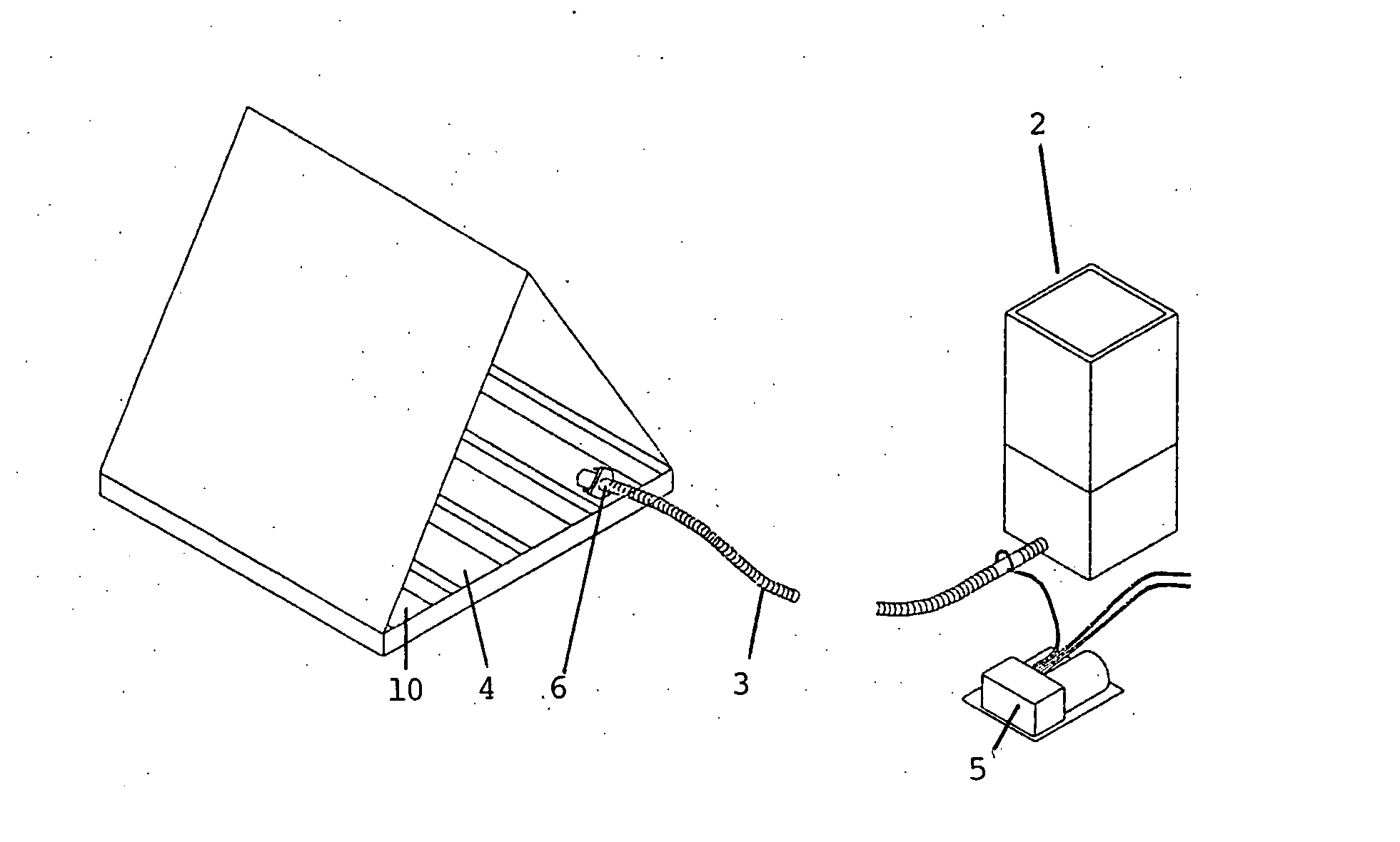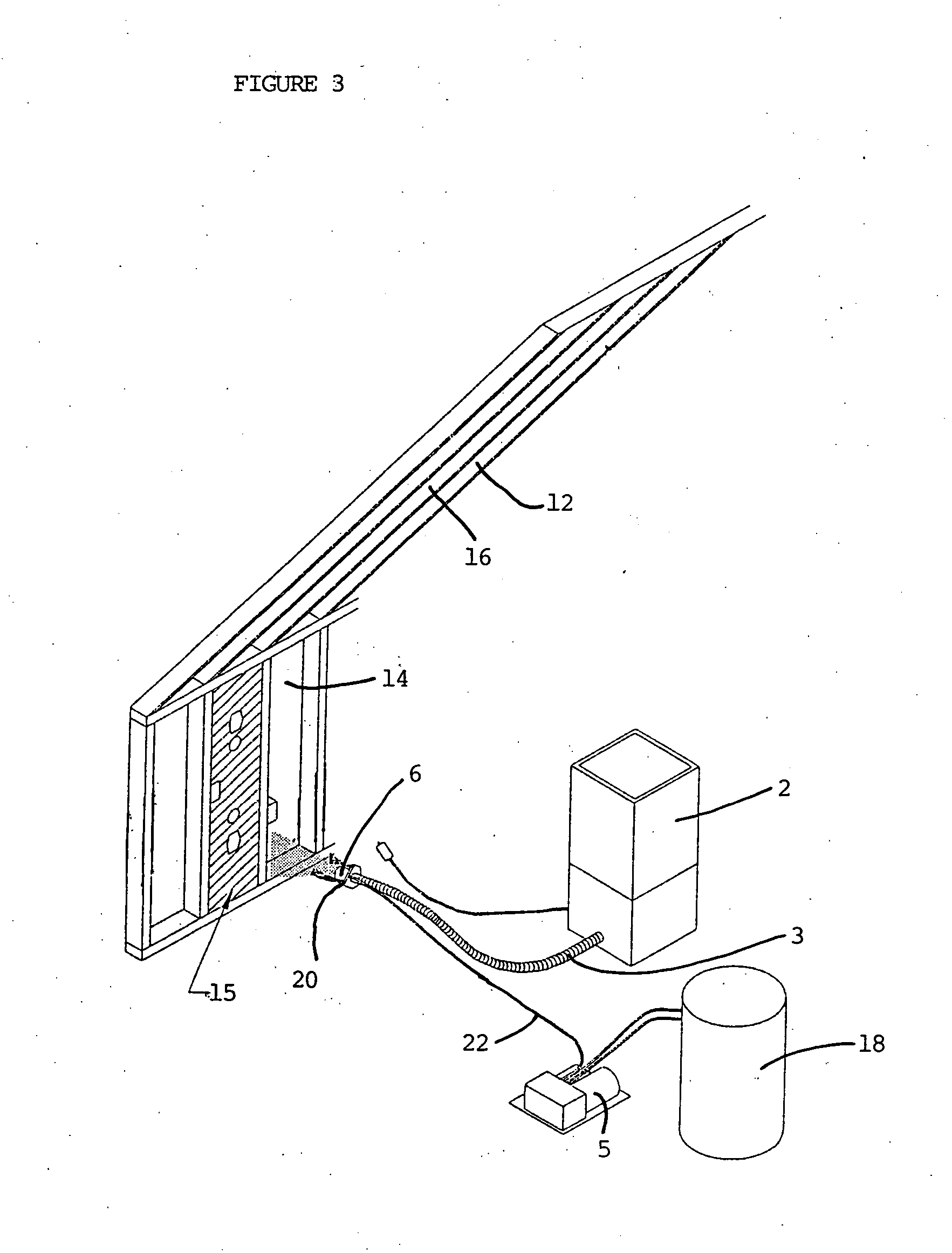Cellulose fibre insulation and method of application
a technology of cellulose fibre and insulation layer, applied in the direction of lignin material coating, starch coating, building components, etc., can solve the problems of customer complaints, insulation has a moisture content of 25% or more, and the structural integrity of the building in which the insulation is used can be damaged, so as to achieve the effect of improving the r-factor and low density
- Summary
- Abstract
- Description
- Claims
- Application Information
AI Technical Summary
Benefits of technology
Problems solved by technology
Method used
Image
Examples
Embodiment Construction
[0035] The term “sloped” or “sloped surfaces” and similar variations are defined to include “vertical” or “vertical surfaces” and a sloped surface is a non-horizontal surface. Cellulose fibres are mixed with a first additive containing a plurality of adhesives and a surfactant. Preferably, the adhesives are starch, methylcellulose and ethylene vinyl acetate (“EVA”). Preferably, the ethylene vinyl acetate is in dry form. By weight of the first additive, cellulose fibres, the starch is substantially 50%, the methylcellulose is substantially 25%, the ethylene vinyl acetate is substantially 20% and the surfactant is substantially 5%. The first additive represents less than 10% by weight of the cellulose fibres and preferably less than 5% by weight of the cellulose fibres. Still more preferably, the first additive represents from substantially 1.0% by weight to substantially 2.5% by weight of the cellulose fibres. Still more preferably, the first additive is substantially 2% by weight of...
PUM
| Property | Measurement | Unit |
|---|---|---|
| Fraction | aaaaa | aaaaa |
| Percent by mass | aaaaa | aaaaa |
| Percent by mass | aaaaa | aaaaa |
Abstract
Description
Claims
Application Information
 Login to View More
Login to View More - R&D
- Intellectual Property
- Life Sciences
- Materials
- Tech Scout
- Unparalleled Data Quality
- Higher Quality Content
- 60% Fewer Hallucinations
Browse by: Latest US Patents, China's latest patents, Technical Efficacy Thesaurus, Application Domain, Technology Topic, Popular Technical Reports.
© 2025 PatSnap. All rights reserved.Legal|Privacy policy|Modern Slavery Act Transparency Statement|Sitemap|About US| Contact US: help@patsnap.com



